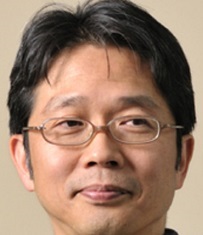Talk Abstract
Genetic causes in rare diseases have been found mostly by whole exome sequencing (WES) using short read-next generation sequencer (NGS). Solution rates of WES are approximately 30%. Therefore, unsolved cases are way more common than solved cases. Long read sequencing technologies could be one of choices to solve such “unsolved” cases.
We are applying long read technologies for whole genome sequencing (WGS) in the “unsolved” cases. With the reasonable cost, WGS can be done with the data covering about 15–50x of the human genome using PromethION (ONT) or Sequel II (Pacbio). This type of analysis usually uncovers thousands of insertions as well as thousands of deletions with sizes of >20bp in every one of analyzed cases. Importantly, most of such structural variations (SVs) are not found in the current human reference genome sequences (hg19 and hg38). Therefore, it is indeed very difficult to appropriately and efficiently interpret such large numbers of SVs.
In addition, approximately 60 repeat diseases are known in humans. The sizes of pathogenic expanded repeats in repeat diseases are mostly within 20kb in size. Therefore, the current long read technologies can read such expanded repeat regions completely in a single molecule read. Thus, long read sequencing technologies are suitable for characterizing such abnormal repeat regions.
We have been developing new methods/tools for efficiently detecting abnormal SVs and pathogenic repeat expansions related to human diseases. Some successful examples will be presented.
Speaker Biography
Dr. Naomichi Matsumoto obtained his MD at Kyushu University and his PhD at Nagasaki University Graduate School of Medicine in Japan. He conducted his postdoctoral training at University of Chicago. Dr. Matsumoto is currently Full Professor of Human Genetics at Yokohama City University (Japan). He is a member of Japan Society of Human Genetics (a council member) and published more over 700 papers and served as the previous Editor-in-Chief for Journal of Human Genetics (Springer Nature Publishing) in 2014-2020. He has discovered 78 genes associated with various human genetic disorders including TGFBR2, NSD1, STXBP1, WDR45, NOTCH2NLC and many others.
His research contributions have been recognized through several awards including the Japan Society of Human Genetics Award for Young Scientist (2003), The Japan Society of Human Genetics Award (2011) and Commendation for Science and Technology from the Japanese Minister of Education, Culture, Sports, Science and Technology.
Education
Kyushu University School of Medicine, M.D., 1986
Graduate School of Medical Science, Nagasaki University School of Medicine, Ph.D., 1997
Career
1986-1993: Obstetrics and Gynecology Practice at Kyushu University and related Hospitals
1997-2000: Postdoctoral Fellow (1997) and Research Associate (1998-2000) at University of Chicago
2000-2003: Associate Professor at Department of Human Genetics, Nagasaki University Graduate School of Biomedical Sciences
2003-present: Professor and Chair at Department of Human Genetics, Yokohama City University graduate School of Medicine
Editorial Board
J Hum Genet (2007-) (Editor-in-Chief 2014-2020, Advisory editor 2020-),
Clin Genet (2005-),
Am J Med Genet Part A (2008-)
Hum Genet (2014-)
Honors and awards
2003 Japan Society of Human Genetics Award for Young Scientist
2011 Japan Society of Human Genetics Award
2019 A Prize for Science and Technology, Research Category, The Commendation for Science and Technology by the Minister of Education, Culture, Sports, Science and Technology

